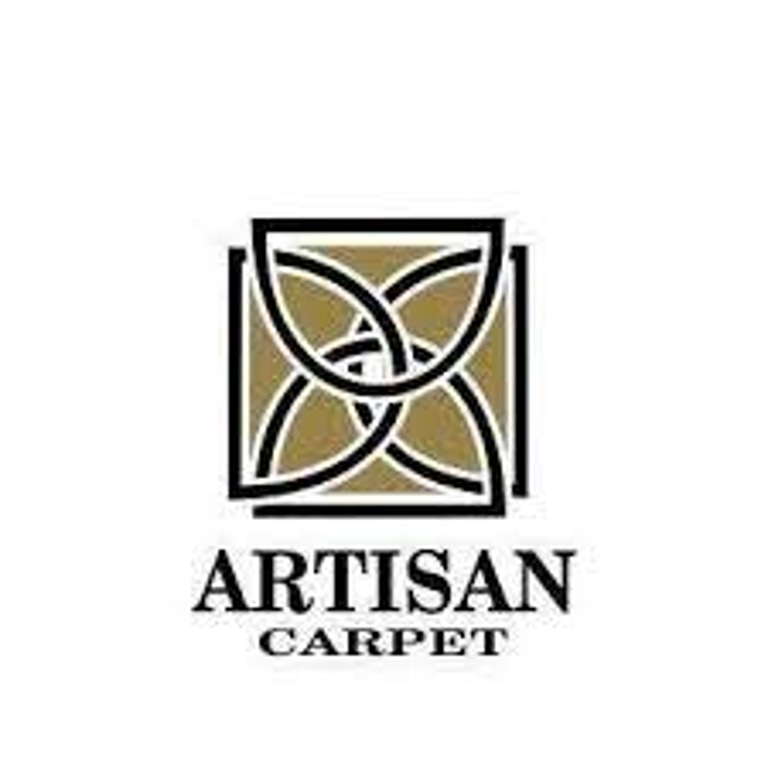BUYING GUIDE
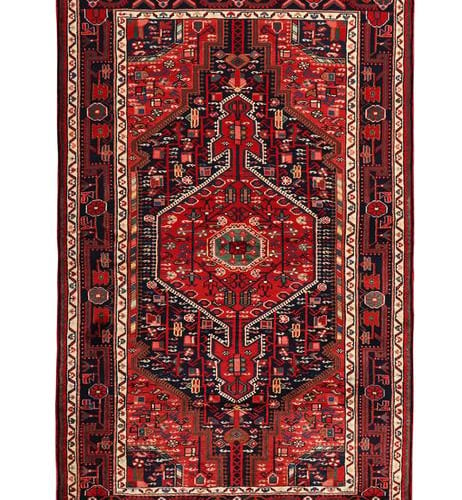

Look in your photo albums for the vibrant influences of every trip you’ve taken. Look at your family for the traditions, heritage, love and laughter. This is your style. There are no rules to break, no absolutes to follow. You are your best inspiration. Let us help you layer the elements of your life to create décor that reflects your singularity. Your home should feel like you. It should be your life, styled. Now it’s time to feel at home in your home.
RUG BUYING GUIDE What's the best way to choose a rug? Simple. Take it one step at a time. We've created this guide to help you make sense of all the warps, wefts and weaves. Whether you're looking for a pop of colour, a subdued statement or simply a plush feel under your feet, here are some simple tips. CONSTRUCTION Believe it or not, most modern-day rugs are made with the same techniques used by master weavers for hundreds of years. The finest hand-woven rugs still require considerable time and attention to detail. And while machine-made rugs can be made more quickly, the same basic techniques remain in place. In most cases, the quality and price or your rug will be determined by the construction time and the talent of the weaver. But don’t forget to consider texture and appearance when shopping. To help narrow your options, take a look at the unique features of these common rug types.
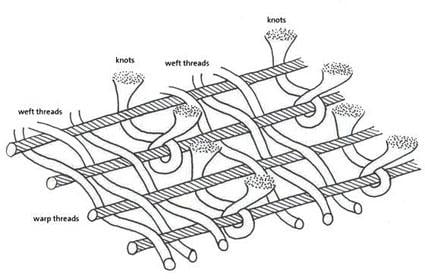

Hand-Knotted Hand-knotting is the most labor-intensive rug-making technique. Master weavers tie individual knots to the warp yarns that make up the length of a rug. Together, these knots form the actual surface, or pile, of the rug. In general, the more knots, the more durable and valuable the rug. Also, no two hand-knotted rugs are exactly alike.
At The Handmade Rug Company we only sell genuine hand knotted rugs.
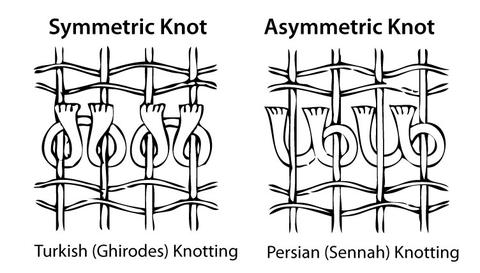

Tufted Easier to manufacture, tufted rugs are created without knots. Instead, loops of yarn are simply pulled through a rug’s backing material, either by machine or hand-held tool. The loops are then sheared to create a smooth, cut-pile surface. Since less work is involved, even the highest-quality tufted rugs can be produced relatively quickly and inexpensively. Note that tufted rugs tend to shed more than other rugs, which may require more frequent vacuuming and resulting in a lifespan of only a few years.
Flat-Woven Unlike the rugs above, flat-weaves do not have a pile. Instead, the rug's vertical yarns (warps) are simply woven through the horizontal yarns (wefts). Flat-woven rugs, such as Kilims and Dhurries, can be produced by hand or machine.
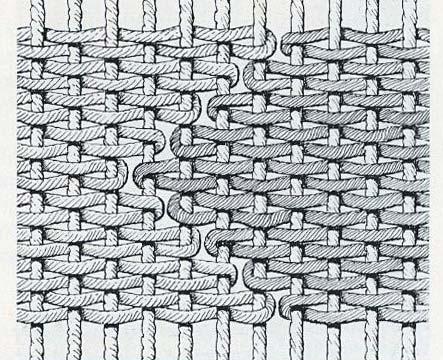

MATERIALS How your rug looks, feels and performs is also dependent on the materials used. So, choose wisely, but remember: every fiber or fabric has its own unique characteristics and advantages. It's just a matter of selecting one that fits your needs. Will your rug be used in high- or low-traffic areas? Will it be underneath furniture or on its own? Check the fibers below to see which kinds of rugs might be right for you.
Wool Produced from the fleece of sheep, wool is a natural fiber that is highly regarded for its strength, durability and luxurious softness. Higher-quality wools tend to come from New Zealand or Tibet, where sheep produce high levels of lanolin. This natural substance enhances the fiber's strength and texture.
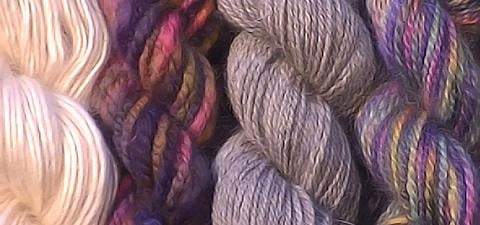

Benefits: Soft, durable, easy to clean Considerations: Prone to early shedding
Silk A natural protein fiber, silk is often blended with other rug fabrics to produce a distinctive softness and sheen. The fiber's unique structure refracts light at different angles, giving it its shimmering appearance. Because silk is created from harvested larvae cocoons of silkworms, the production process can be tricky and time-consuming. Not surprisingly, even the smallest addition of silk can increase a rug's cost.
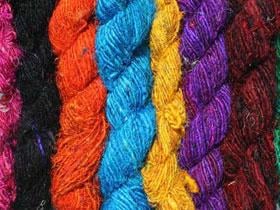

Benefits: Very soft, strong, distinctive sheen Considerations: More difficult to clean, shows footprints Cotton Taken right from the cotton plant, this natural fiber is both soft and strong. Cotton area rugs can easily absorb a variety of dyes, allowing for many color options and designs. The fabric also makes a great backing material, helping the rug keep its shape and lie flat against the floor.
Benefits: Easy to clean, machine-washable, biodegradable Considerations: Attracts dust easily, wears quickly SIZE Before buying a rug, be sure to measure your space carefully. Use a tape measure-twice, to be safe-as guessing can easily lead to mistakes. You want your rug to not only fit the space, but also make the most impact possible. Here are some helpful tips you can use throughout your home. Dining Room Leave enough room so that the rug extends beyond the back legs of a chair when someone is seated. Otherwise, your chairs may wobble on the uneven surface-not the most comfortable dining experience. An 240cm x 300cm (8' x 10') rug is the most common size for dining rooms, but be sure to measure your space and the area around the table with chairs pulled out. Living & Family Rooms Here, there's really no right or wrong way to place your rug. It's all about preference. The bigger the rug, the more it'll pull the other elements of the room together. Use the coffee table, or center of the room, as the primary focal point and plan outward from there. Bedroom Rugs are a great way to add extra softness and soundproofing to the bedroom. Simply choose a rug the fits the width of your bed. Or, if you're looking for something larger, find one that will cover the space beneath your nightstands, too. Kitchen, Hallway & Foyer Look for runners and round area rugs to fill the narrower spaces and nooks throughout your home. Remember to use a tape measure first, so that there are no surprises once you get your rug on the floor. Rug information and glossary
We put in place a brief description on each of our online rugs, below will go some way to explaining common "rug jargon" you might find here.
Abrash - A graduated or transitional change in the colour of a rug - seen as darker or lighter striations of hue/value - due to differences in either the wool or dye batch.
All-over design - A term used to describe a rug without a central medallion but with a design repeated throughout the field.
Antique Finish/Wash - a chemical soaking process designed to to simulate aging by modifying colour saturation and intensity of the rug.
Arabesque - Ornate curving design featuring intertwined floral and vine figures - often seen in intricate workshop rugs such as those from Tabriz, Isfahan, Nain and Qum.
Aubusson (Aubuson) - These fine flat-woven carpets / rugs, featuring formidable sized rugs in pastel colors with floral medallions, were produced in France from the 15th - 19th centuries.
Axminster Rug (Loom) - First produced in the 1880's, machine-made rugs were mechanically woven to a flexible cotton frame and having up to 70 colors of wool.
Boteh - A pear-shaped figure often used in oriental rug designs characteristic of the paisley pattern The boteh may represent a leaf, bush or a pinecone.
Cartouche - Oval-shaped ornament incorporated into the rug design containing a signature, date, or inscription
Carved Pile/(Map) - Design or pattern cut or "embossed" into the pile of a rug - common in Chinese and Tibetan carpets.
Chain Stitch - A crochet stitch used in rug construction that consists of successive loops to lock the final weft in place at the end of a rug.
Dhurrie - A flatwoven rug from India, usually made of cotton or wool.
Flat-Weave - term describing any rug without (wool) pile: including Soumaks, Kilim, Verneh, Sozani, and Dhurie. (Aubuson carpets, though flat, are excluded from this category due to factors such as their complexity)
Field - The part of a rug's design surrounded by the border. The field may be blank or contain medallions or an over-all pattern.
Fringe - Warps extending from the ends of a rug which are treated in several ways to prevent the wefts and knots from unraveling.
Gabeh - A long-piled rug style with a simple colorful design - originally used as mattresses - that have attained recent popularity.
Gul - A medallion either octagonal or angular in shape used in Turkoman designs It is often repeated to form an all-over pattern in the field.
Handmade Rug - A rug that is either entirely handknotted (or handtufted) and usually made of wool, and which may also include the addition of silk.
Herati - Design type found in Persian carpets featuring the repeated pattern of four pinecone or leaf-like figures woven around a diamond shape - an effect sometimes noted to resemble a fish-like motif.
Heriz - City on Iran-Azerbaijan border and name for the geometric medallion rugs popularized in the early 20th century. This design remains extremely popular in Europe and the U.S.A.
Hooked rug - A hooking device pushes and loops yarn through a canvas producing either a loop hook or latch hook rug (also the loops can be sheared to create an open pile).
Kashmir - Upscale carpets made of either silk or mercerized cotton from the Islamic region of India - woven with a Persian knot.
Kazak - Referring to the Turkish-style rugs produced by the peoples of Kazakhstan and of that region.
Kilim - A flat-woven (pileless) carpet, often reversible, in which a design pattern is formed by colored weft strings being wrapped around the warp.
Knap - the brush-like surface of the rug, created when the knot loops are cut. Knot - the basic technique used to create an Oriental carpet: Two types of knots are used:
The Persian Senneh knot is a fine, assymetrical knot used in relatively complex carpets, giving them a "light" and a "dark" side.
The Turkish Ghiordes knot is symmetrical and gives a rug a deeper, longer-wearing pile.
Knot count - In the process of making a hand knotted rug, each strand of yarn is knotted to the foundation: The higher the number of knots per square inch - the higher the quality of the rug.
Knotted - Process by which a rug is hand woven with wool (or silk) and secured to a cotton foundation by knotting - thus producing a rug of superior quality. Such a rug could be classified as "knotted", "hand-knotted", "hand- woven" or "hand-made"(handmade). Factors that may affect or increase value/cost are the density of the pile (knots per square inch) as well as the intricacy of the design motif.
Medallion - Large design element located in the very center of the rug's field - the hallmark of the traditional, symmetrical Oriental area rug. In rugs with an All-over design or a random or contemporary design format a medallion will not be displayed.
Mori - The weaving technique of certain Pakistani and Indian rugs.
Natural rug - Often refers to an earth-toned rug whose texture - sisal, jute or wool - is the identifying feature.
Patina - Term referring to the "mellowed" surface appearance of a rug - due to age or use.
Persian Knot - Looped around one thread with only a halt-turn around the other thread.
Pile - The nap of the rug or the tufts remaining after the knotted yarns are dipped.
Pile weave - The structure of knotted carpets and rugs forming a pile or nap: Wool, silk, (sometimes cotton) is knotted around the warp in a variety of techniques.
Plain Weave - The simplest interfacing of warp and weft.
Prayer Rug - Typically small, this rug features an arch motif at the top of the field - either geometric or curvilinear - depending on where it was woven.
Runner - A long, narrow rug, usually under 3 feet wide, primarily used in hallways and on staircases.
Savonerie - The class of beautiful impressionist-quality pile carpets, made until 1890 in France
Selvage - the area between the edge of a rug and the fringe.
Soumak - A flatwoven rug made from a technique that produces a herringbone effect.
Tapestry - Generic term referring to a flat-woven wall hanging characterized by rich pastoral design settings.
Tea Wash - A procedure used to soften the colors in order to give a rug the appearance of age.
Tribal rug - A term used interchangeably with gabbeh to describe a primitive- looking or Southwestern rug.
Tufted - A process in which tufts of wool are punched through a base fabric. The underside of the base is then painted with Latex glue and covered with a backing material.
Turkish Knot - Tied around two adjacent warp threads.
Warp - Comprising the structure parallel wrap yarns run the length of the rug and are interlaced with wefts.
Weft - The yarns woven horizontally through the warps.

